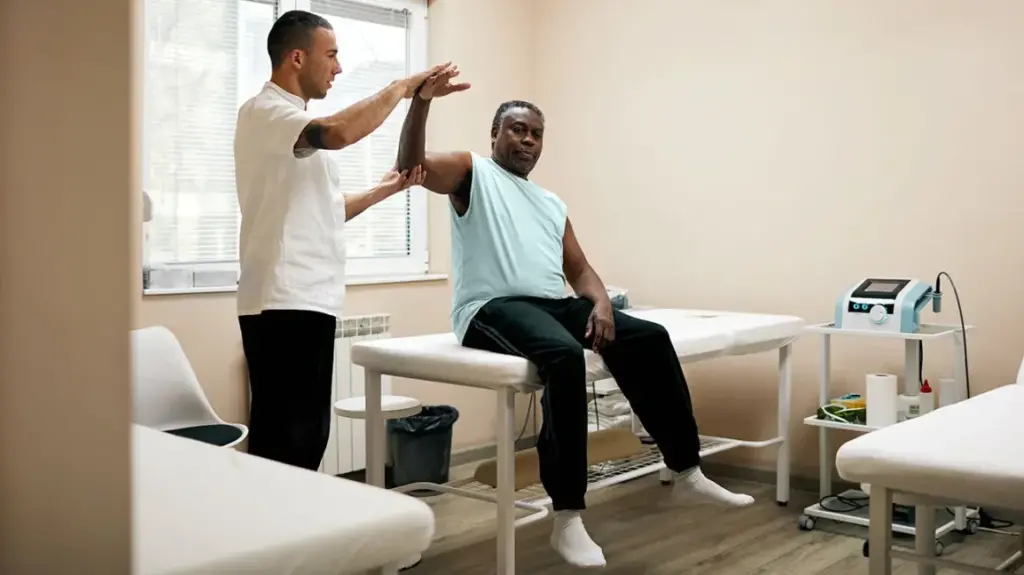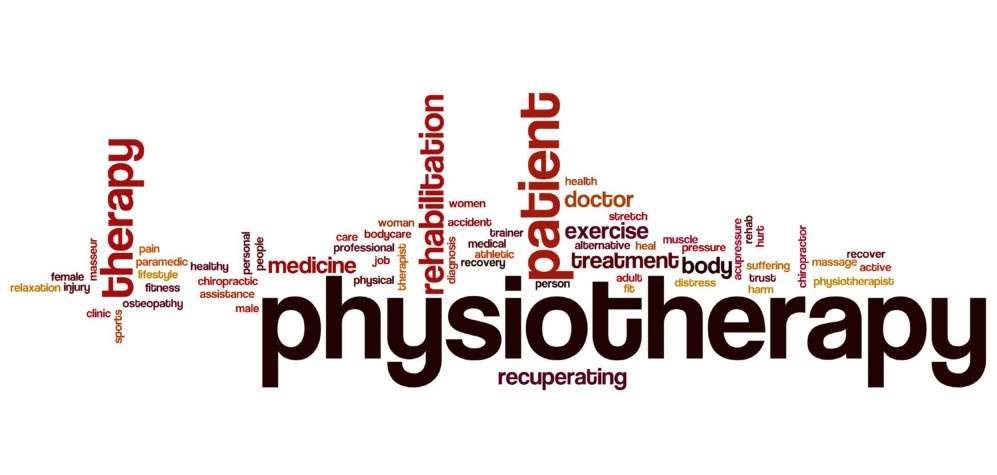Wellness Through Movement | Physical Therapy
Physical therapy emerges not just as a medical routine but as a profound commitment to better health, transcending mere pain relief to encompass holistic rehabilitative care. Dive into the realm where movement is medicine and where every exercise brings you closer to reclaiming your life.
Key Takeaways
- Enhanced Mobility: Physical therapy helps regain function and improve mobility.
- Pain Management: Effective strategies that reduce reliance on medications.
- Preventive Care: Proactive measures to prevent injuries and manage chronic conditions.
- Personalized Care: Tailored treatments align with individual health goals and lifestyle needs.
Transforming Lives Through Rehabilitative Care
Physical therapy stands as a beacon of hope for many, providing essential guidance through the intricate dance of recovery and health optimization. It’s not merely about recovery; it’s about empowering individuals to lead lives filled with activity and independence.
The Heart of Physical Therapy
At its core, physical therapy involves a nuanced understanding of human movement. Therapists are experts in diagnosing and treating movement dysfunctions, aiming to restore and enhance physical function. Whether it’s navigating the aftermath of an injury or managing a chronic illness, physical therapists craft personalized treatment plans that respect each person’s unique health scenario and life ambitions.
Pain Relief Without the Pills
In an era where opioid dependency is a growing concern, physical therapy presents a viable alternative to manage pain effectively without the associated risks of drug dependence. By focusing on mechanical solutions and therapeutic exercises, therapists help patients manage pain naturally, reducing the need for medications and potentially avoiding surgery.

Real Stories, Real Recovery
Imagine regaining the ability to walk unaided or returning to a beloved sport after a severe injury. These stories aren’t just possible; they’re common among those who embrace physical therapy. Through personalized care plans that include pain management, mobility enhancement, and preventive strategies, patients often find a new lease on life, escaping the spiral of chronic pain and immobility.
Better Health Through Movement
Physical activity is a cornerstone of health, yet many struggle to meet the recommended levels due to pain or mobility issues. Physical therapists excel in breaking these barriers by tailoring exercise programs that fit into the lifestyles of their patients, thereby promoting sustainable health improvements. Their expertise extends beyond exercise prescription; they are adept at adapting programs to meet the evolving needs of their patients, ensuring that each step taken is one toward better health.
How Physical Therapy Works
The process typically begins with a detailed evaluation, where therapists assess movement patterns, pain levels, and functional capabilities. This assessment forms the basis of a treatment plan that integrates various therapies—be it manual therapy, exercises, or modalities like heat or ice. The goal? To enhance performance, alleviate pain, and improve quality of life, all while educating patients on maintaining and improving their health independently.

Beyond the Clinic: Physical Therapy in Everyday Life
Physical therapy isn’t confined to the clinic. Therapists often provide strategies for integrating therapeutic principles into daily routines at home or work, ensuring that each environment contributes to the patient’s recovery and long-term health goals.
Table of Rehabilitation Benefits
| Benefit | Description |
|---|---|
| Mobility Improvement | Restores function to injured or affected areas. |
| Pain Management | Reduces reliance on medications and helps avoid surgery. |
| Preventive Care | Helps avoid injuries and manage symptoms of chronic diseases. |
| Personalized Treatment | Tailors strategies to individual needs and lifestyle choices. |
For more detailed information on the benefits of physical therapy, explore these resources:
- Choose PT: Benefits of Physical Therapy
- Healthline: Understanding Physical Therapy
- NCBI Bookshelf: An Overview of Physical Therapy
Advancing Wellness: The Preventive Power of Physical Therapy
Physical therapy isn’t just about recovery; it’s a proactive approach to maintaining health and preventing future injuries. By integrating physical therapy into regular health routines, individuals can safeguard their mobility and enhance their overall quality of life, thereby reducing the risk of injuries and chronic conditions.
The Proactive Path to Preventive Care
Preventive care through physical therapy focuses on reducing the risk of injury and illness before they occur. Physical therapists design programs that strengthen vulnerable areas, improve flexibility, and increase overall stamina. This preventative approach not only helps to avoid future medical costs but also enhances the ability to enjoy life without physical limitations.
Tailored to Meet Everyone’s Needs
Whether you’re an athlete looking to improve performance or someone recovering from surgery, physical therapy can be customized to address specific health goals and prevent complications. From elderly individuals aiming to maintain independence to young professionals seeking relief from the physical strains of desk jobs, preventive physical therapy has something to offer everyone.

Frequently Asked Questions
What conditions can physical therapy help prevent?
Physical therapy can help prevent a range of conditions, from repetitive strain injuries to more severe ailments like stroke or heart disease. By maintaining an active lifestyle and addressing risk factors early, physical therapy aids in preventing the progression of many chronic diseases.
How often should I visit a physical therapist for preventive care?
The frequency of visits to a physical therapist can vary based on individual needs and goals. Some may benefit from regular weekly sessions, while others might only need periodic check-ups to ensure they maintain proper form and technique in their exercises and daily activities.
Can physical therapy help with mental health?
Yes, the benefits of physical therapy extend beyond physical health. Regular physical activity, which is often a part of a physical therapy program, can significantly improve mental health by reducing symptoms of depression and anxiety and improving mood and cognitive function.
Embracing a Full Spectrum of Therapeutic Services
Physical therapy offers a range of services that extend well beyond traditional exercise routines. From manual therapies that involve specific hand movements to relieve pain and improve circulation to advanced techniques like dry needling or aquatic therapy, the scope of physical therapy is vast and varied.
Innovative Therapies in Physical Therapy
Emerging technologies and techniques continue to enrich the field of physical therapy. Tools like virtual reality (VR) for pain management and rehabilitation, and robotic-assisted therapy for stroke recovery, are pushing the boundaries of what’s possible, offering patients cutting-edge options for their health care needs.
Specialist Areas Within Physical Therapy
Physical therapists often specialize in particular areas such as sports injuries, pediatric conditions, or geriatric care. These specialists bring a depth of knowledge to their practice, tailored to the unique challenges and needs of different population groups, ensuring that all patients receive the most effective and targeted treatment possible.
Incorporating physical therapy into your life isn’t just about dealing with existing conditions—it’s about setting a foundation for a healthier future. Embrace the movement to better health with physical therapy, where each step is a stride towards longevity and well-being.







